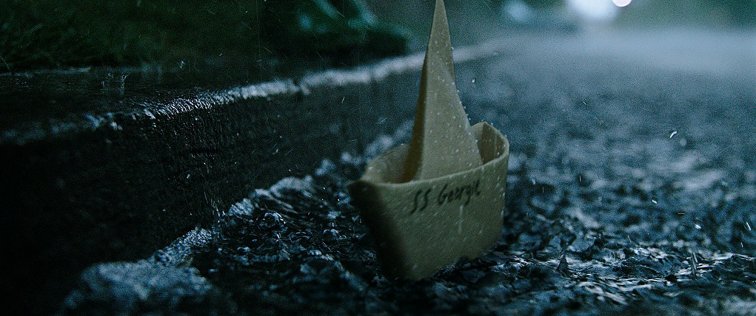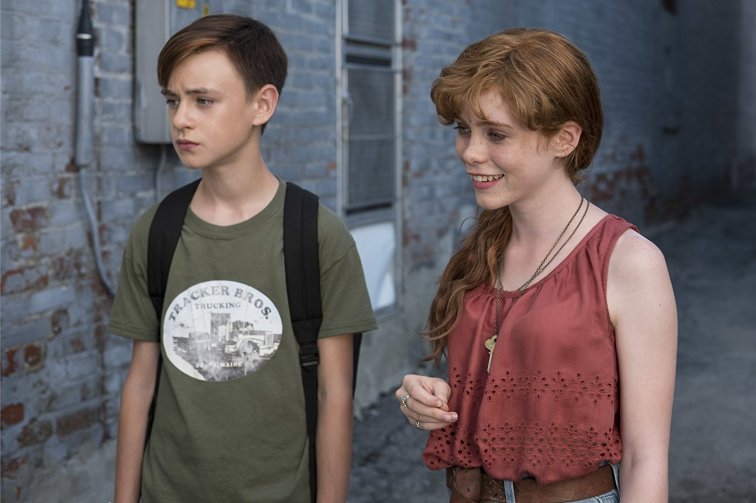I would like to preface this review with a note on film criticism, particularly in cases of remakes and reboots. The way I, as well as my colleagues here on The Fan Men, criticize works of art is based mainly upon the individual merits of the work. That is to say, although It was previously released as a two-part miniseries in 1990, I will not be spending half of this review comparing and contrasting that version to this new, 2017 film. The 2017 It directed by Andrés (Andy) Muschietti deserves the right to stand as its own work, independent from the previous iteration.
Do not confuse my allowance to give It its fair shake with me saying that the source material is irrelevant. With all of Stephen King’s works, that is simply not true. King’s original work is absolutely indispensable when transferring these stories to film. We have seen what happens when studios attempt to mangle King’s original vision to better fit big-budget Hollywood films. In fact, we saw it just last month, with the release of The Dark Tower, which seems as though the writers simply read the synopsis on the back cover of the first book and decided to make a story loosely based on its contents. Fellow Fan Men contributor and co-founder Brett Killian has plenty more to say about that in his review of The Dark Tower. King’s work demands more respect and care than that if it is to be properly transported to the wonderful world of cinema. Luckily for us, Muschietti’s film is capable at bringing the spirit of King’s 1987 novel to life.
Before discussing the narrative content of the film, I would like to firstly applaud cinematographer Chung-hoon Chung, [Oldboy (2003), Me and Earl and the Dying Girl (2015)], for crafting such an aesthetically pleasing, and often times daring film to look at. I largely credit him for keeping the film from feeling stale in some of the slower parts, and helping to avoid traditional pitfalls of the horror genre. The film’s cinematography includes one-shots, Dutch-angles, and striking silhouettes galore, but does not overindulge like more brazen films might (anything by Tarantino comes to mind). The artful shots conveyed here are mostly underplayed, complimenting rather than overpowering the narrative. The one-shots are very reminiscent to Spielberg’s in Jaws (1975). Don’t remember the continuous shots in Jaws? That is because Spielberg used them to blend the dialogue and performances with the world he crafted, and Chung does the same with his filming. I have more to say about Spielberg in this review, but we’ll get to that later.

It succeeds as a film because it creates a well-written, believable narrative. Well, as believable as an immortal killer clown can be. The chemistry between the actors allows the performances to breathe and characters to be fully fleshed out. When the so-called “losers club” is interacting amongst each other, the film flows like a well-oiled machine. Finn Wolfhard, oozing confidence no-doubt gained from a starring role in the hit Netflix series Stranger Things, provides perfectly-timed comedic relief. He is further complimented by the youthful leads of Sophia Lillis and Jaeden Lieberher, both turning in stellar performances as damaged youths, attempting to debunk mysteries in the damnable town of Derry, Maine. Lieberher should be doubly commended for convincingly playing his character with a vocal stammer, which in a lesser actor’s hands could have been distracting and bothersome. Well done, kid.

The main attraction in this film, however, is Bill Skarsgård, as the petrifying Pennywise, the Dancing Clown. As I stated at the beginning of this review, I see no point in comparing his performance to that of Tim Curry’s original turn as the demented jester. Curry’s performance was amazing, yes. But Skarsgård’s Pennywise was a character all to itself. The young talent, grown from a family of talented actors, (Stellan, Alexander, and Gustaf Skarsgård have all proved themselves to be acting-inclined), forces your attention every time he is in frame. From the excellent makeup and costuming, to the playful yet sinister and shaky voice, Skarsgård does a great job distinguishing himself from his younger co-stars.
The film is not without fault, unfortunately. While the scenes of interaction between the young stars allows the film to keep a quick-paced stride, it is all too often ground to a halt by what feels like an endless amount of character vignettes showcasing their individual fears. I understand what the film was trying to achieve, being that each character needed to experience their fears alone to realize that they can only defeat them together. The issue with these scenes is not that they were too slow, but that they were too repetitive. Each personal character vignette plays out the same way. The creepy music kicks in, the scene darkens, and the character walks slowly… way too slowly… towards the source whatever initiated the fear. After seeing this same scene play out with only slight differences five, six, seven times throughout the first two-acts of the film, it completely loses its impact.
Spielberg! You didn’t think I’d forget, did you? I bring up legendary director Steven Spielberg only to say that this film tonally achieves what this man has mastered. Spielberg is the master of innocently conveying the pure interactions of adolescents, and paired with King’s writing, the film at times feels like a perfect blend of Stand by Me and E.T. This perfection in tone is found in the superb casting as well as the authentic writing. Let’s face it, child actors are hit-or-miss, mostly falling toward the latter. They are often distracting, and in the worst of cases, negate a good performance given by an older actor. Luckily, this is not the case here. Muschietti crafts a tale that embodies youthful curiosity and playfulness, highlighting camaraderie and friendship, without ever feeling cheesy or out of place.
Much like the film itself, this review has gotten a bit long-in-the-tooth, therefore, I offer you a final word on 2017’s It. The film is a success. It does an amazing job selling us believable, youthful characters, looks incredible, and does Mr. King’s work justice. A successful adaptation, and while it may not instill the immense fear of the original novel, or of many other modern-day horror films for that matter, it still stands as an enjoyable flick. So c’mon Georgie, give it a try. If you’re lucky, you’ll float too.


Cannot wait to see this this weekend!
LikeLiked by 1 person